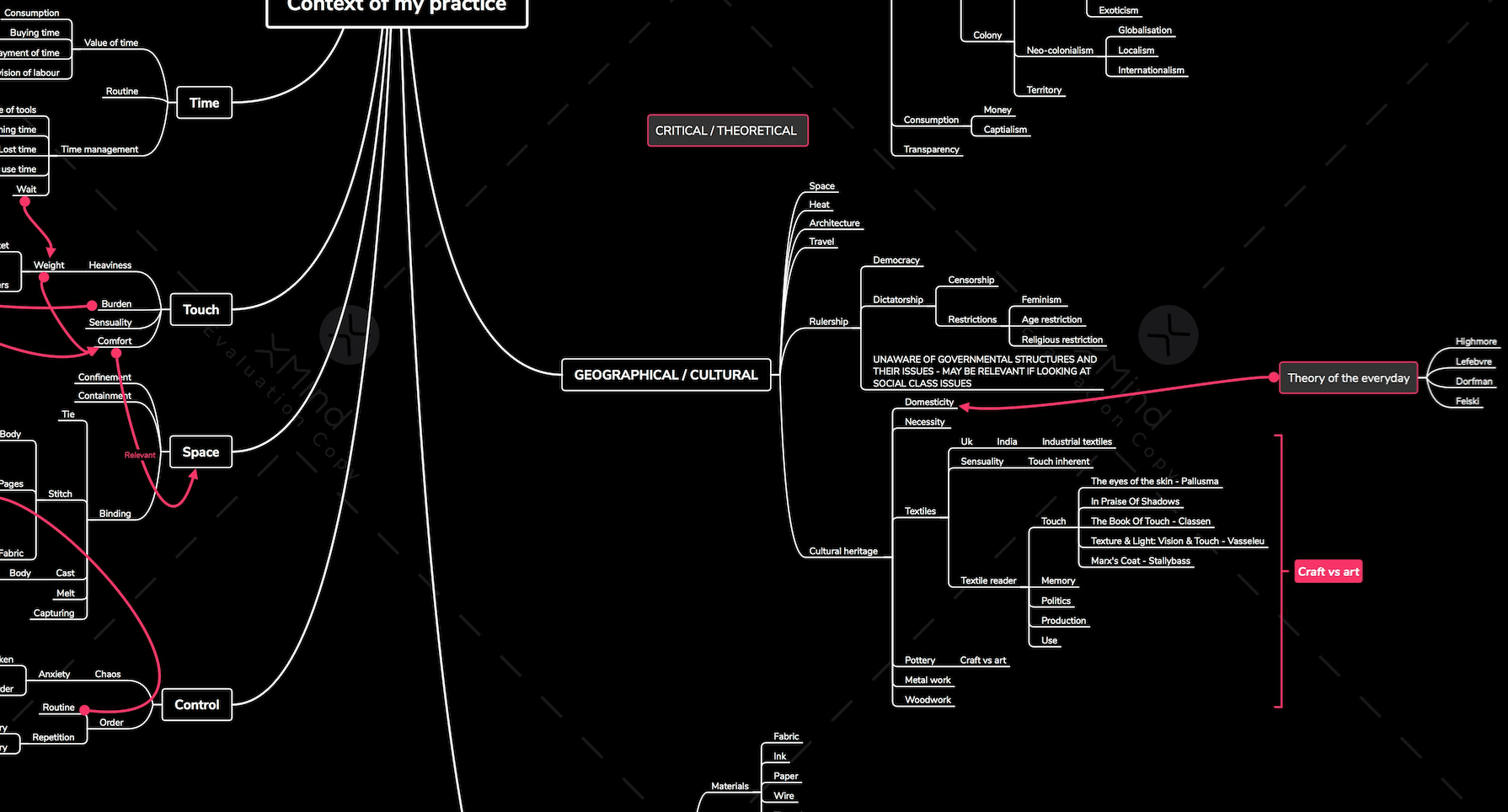Professional Practice seminar - CW
PPP and audience -
reference to Docherty and the white cube - is it enough to make work for the self, is it important that work is made for people or space - how is it encountered, does it need happenstance, or planned to view -
White cube - the audience - spectator, viewer, observer, perceiver - I tend to say, consumer -
CW- list - witness, observer, audience, participant, spectator, perceiver, viewer, collaborator, partner, conspirator, - the consumer - investigator, invigilator, instigator, the enquirer
peer, look, study, dismiss, power struggle -
How is the audience perceived with he works
how is the work seen
how does the display of the work affect it
15 mins in a breakout room to discuss the audience for our work and what the other person thinks - alternative audiences and ways to engage with them. analyse what role they are taking
Break out with Mark, which is great as Les had suggested I talk to him about the work.
we discuss the projection of work and he suggests. pocket-sized projectors for a phone - Samsung - luminaire phone - will look in to this.
both of us are currently working on the unintentional audience. On producing work/displaying work where it will be happened upon or where the choice of consumption is removed from the audience as they will encounter it unscheduled to them. WE discuss how i may display my work, possibly through the school the newsletter and other published or accessible forms. Then we discuss the lack of access, projecting it into a sealed box or a room that's locked - a sign that says in this room is a video but you can't go in. a non-audience - deliberately not allowing it. the daylight and throw windows and into a room from the outdoors - people will see the projector, they are aware of the happening but perhaps not the work. the visible and the non-visible - when it's happening in a contained room they are aware of it, but when the source is moved outside it creates a new sense of audience - the layers - don't plug it in or leave the lens cover on.
doesn't feel like its art - to busy doing masters in fine art to do the art you want to do.
guerilla audience taking - how to get an audience without having to ask for one. the work has been put to the side to create work for the task, its lead to interesting work but not that was expected. un intention audience - but it is intentional for us as artists, but their consumption is unintentional to them.
accessibility - exclusivity - engagement - comfort and awareness - authenticity and it does the same job if the job is an engagement or a change in thinking - the art world has an exclusivity - self-importance -
not making claims about the work - that we as makers make connections that others don't see - the potential to make a claim that appears unsubstantiated - what the work is about and what is actually visible etc. Where language sits with artwork, how artwork reaches people and its cloaked in the text.
the first audience is the person assessing the open call/ exhibition selection.
how do open calls help move an artist practice - what do they bring to the work, the career, etc
doe it enables the production of work, dies it refine medium or practice - explore boundaries - medium specificity - theme specificity - how to apply to and gain feedback from an open call.
PPP - 1000 - 1500 words - including last years words.
career plan - summary and map of practice - one year ahead, three years head, 5 years ahead. - dreams aspirations - realistic,
identify networks, need for skills or facilities, appropriate ways of presenting other professional considerations
work back into it in a different colour for this year -
be honest - where you are, where you want to be, etc.
reflection of Testing boundaries- - what do we take away, did it work. Would we continue, what would we keep. how have we changed etc. what have we learnt and have we found a seem of investigation that is burgeoning etc.













